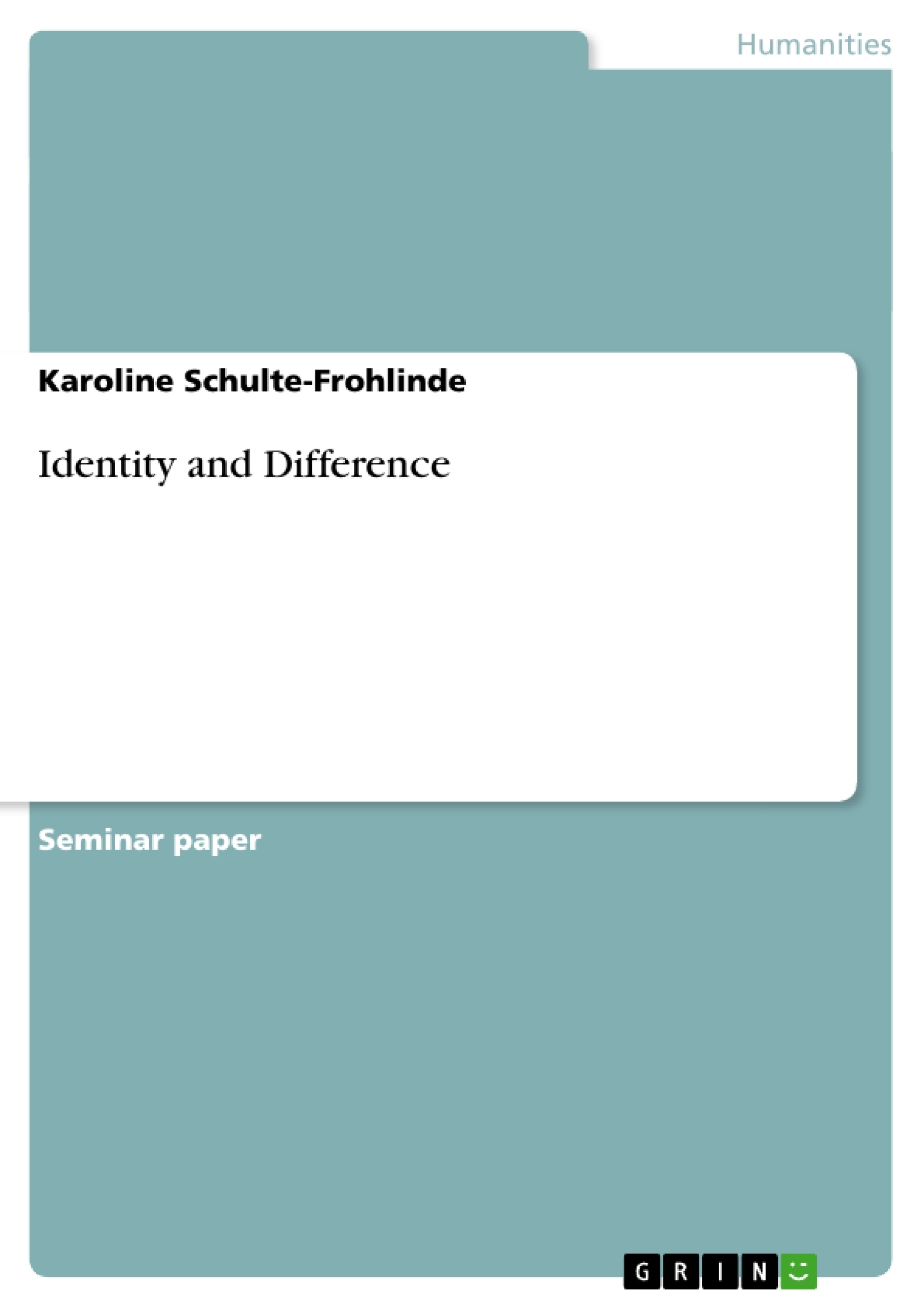`Identity` is a term that shall carry an image. It transports the idea that everyone is something or someone special. This meaning of identity of being special and unique arised rather at contemporary times. The basic character of modernity, the continuous necessity to organize things according to the surrounding to handle them and the contingency of their relationship, is today also ascribed to the construction of identities. This means that identities are seen as contingent and fluent themselves. They are permanently new constructed out of different sources, that may differ in their relevance from time to time. In case of war, for example, nationality becomes the most important source of identity. Other sources, such as profession or gender and sexuality, have no relevance then. So identities are historically specific. They are produced at particular moments in history. The pressure to constantly renew and modify identities also leads to diverse problems. It is felt that identity is in crisis because old certainties no longer obtain. This causes confusion. One way to deal with this, is to analyse out of which components identity is produced, to be able to identify the set of conditions that construct liveable subject-positions.
Inhaltsverzeichnis (Table of Contents)
- Introduction
- Identity and the point of view - Essentialism or non-essentialism?
- What does it mean that identity is relational and marked out by difference?
- Which function has representation in the process of constructing identities? What is so powerful about representation and in which ways are some meanings preferred over others?
- What does the assertion that national identities are historically specific mean?
- Is there a general crisis of identity? Where does it come from?
- Conclusion
Zielsetzung und Themenschwerpunkte (Objectives and Key Themes)
This text explores the complex and dynamic nature of identity in contemporary society. It examines the historical and social factors that shape individual and collective identities, challenging traditional notions of fixed and essentialist identities. The text delves into the construction of identities through difference, representation, and the role of social and cultural structures.
- The fluidity and contingency of identities
- The relationship between identity and difference
- The role of representation and symbolic systems in constructing identities
- The historical specificity of identities
- The concept of a "crisis of identity" in contemporary society
Zusammenfassung der Kapitel (Chapter Summaries)
- Introduction: The text introduces the concept of identity as a contemporary construction shaped by historical and social factors. It emphasizes the dynamic and fluid nature of identities, highlighting their contingent formation based on diverse sources.
- Identity and the point of view - Essentialism or non-essentialism?: This chapter presents two contrasting perspectives on identity: essentialism, which views identity as fixed and transhistorical, and social constructionism, which emphasizes the fluid and contingent nature of identity.
- What does it mean that identity is relational and marked out by difference?: This chapter explores the concept of identity as relational and constructed through difference. It analyzes how symbolic systems, cultural classifications, and social exclusion contribute to the formation of identities.
Schlüsselwörter (Keywords)
The key concepts explored in this text include: identity construction, difference, representation, social exclusion, historical specificity, essentialism, non-essentialism, cultural studies, and the crisis of identity.
- Arbeit zitieren
- Karoline Schulte-Frohlinde (Autor:in), 2005, Identity and Difference, München, GRIN Verlag, https://www.hausarbeiten.de/document/48963


